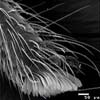| . |  |
. |
The future operational effectiveness of U.S. Coast Guard ships in littoral warfare and other key national security missions will be revolutionized in an agreement announced today between Northrop Grumman Corporation's Ship Systems sector and Kockums AB and its parent company, Howaldtswerke Deutsche Werft AG (HDW). The pact is an expanded version of an earlier agreement and allows for the continued sharing of composite shipbuilding technologies. The modified contract and an accompanying technology license agreement extends the partnership to include cooperative work in the design and construction of a composite lead ship technology demonstrator of the Deepwater program's fast response cutter (FRC). Upon approval by the Coast Guard, this ship will be the first in a series of 150-foot fast patrol vessels that will eventually replace the service's aging fleet of Island-class boats. The original cooperative agreement, signed in October 2002, covers the design, development, construction and sale of Visby-class ships and/or derivative technology to the U.S. government and sales to friendly international governments through the Foreign Military Sales program. This agreement between the parties allows Northrop Grumman and the U.S. government to take advantage of more than 30 years of Kockums' experience and investment in developing all-composite, corvette-sized monohull ships. This leading-edge vessel technology will deliver unique and unmatched stealth, speed, modularity and survivability characteristics to the U.S. national fleet. Kockums has brought its decades of experience in composite shipbuilding to the current design and construction of the first Visby-class corvette, which is presently undergoing combat systems installation and sea trials. Early indications are that the ship will meet or exceed expectations in every area. "We believe that composite technology is a perfect fit for the U. S. Coast Guard's FRC Program," said Dr. Philip A. Dur, Northrop Grumman corporate vice president and president of the company's Ship Systems sector. "Our cooperative efforts with Kockums, the world leader in composite maritime security and combatant construction, will bring their proven experience to complement our company's strengths as the leading U.S. provider of surface combatants and Coast Guard cutters." "We are pleased that our partnership with Northrop Grumman Ship Systems has now resulted in a concrete project focused on providing the US Coast Guard with new vessels built in composites," said Kockums CEO Martin Hagbyhn. "This agreement sends important signals to our export markets that our U.S. partner has, with this particular project, decided to invest in composites and stealth technology. Kockums' stealth concept has attracted considerable international attention, and I am sure that we can offer our American partner much experience and 'know-how' in composite shipbuilding." Northrop Grumman Ship Systems includes primary operations in Pascagoula and Gulfport, Miss.; and in New Orleans and Tallulah, La., as well as in a network of fleet support offices in the U.S. and Japan. Ship Systems is one of the nation's leading full-service systems companies for the design, engineering, construction and life-cycle support of major surface ships for the U.S. Navy, U.S. Coast Guard and international navies, and for commercial vessels of all types. Kockums stands for leading-edge, world class naval technology � above and below the surface. The company designs, builds and maintain submarines and naval surface vessels that incorporate the most advanced stealth technology. The Kockums Surface Vessel Division, including all production facilities, is located in Karlskrona, Sweden. Related Links Northrop Grumman Ship Systems SpaceDaily Search SpaceDaily Subscribe To SpaceDaily Express  Washington - Apr 26, 2004
Washington - Apr 26, 2004Scientists have found that the way spiders stick to ceilings could be the key to making Post-it notes that don't fall off � even when they are wet. A team from Germany and Switzerland have made the first detailed examinations of a jumping spider's 'foot' and have discovered that a molecular force sticks the spider to almost anything.
|
| ||||||||||
| The content herein, unless otherwise known to be public domain, are Copyright 1995-2016 - Space Media Network. All websites are published in Australia and are solely subject to Australian law and governed by Fair Use principals for news reporting and research purposes. AFP, UPI and IANS news wire stories are copyright Agence France-Presse, United Press International and Indo-Asia News Service. ESA news reports are copyright European Space Agency. All NASA sourced material is public domain. Additional copyrights may apply in whole or part to other bona fide parties. Advertising does not imply endorsement, agreement or approval of any opinions, statements or information provided by Space Media Network on any Web page published or hosted by Space Media Network. Privacy Statement All images and articles appearing on Space Media Network have been edited or digitally altered in some way. Any requests to remove copyright material will be acted upon in a timely and appropriate manner. Any attempt to extort money from Space Media Network will be ignored and reported to Australian Law Enforcement Agencies as a potential case of financial fraud involving the use of a telephonic carriage device or postal service. |